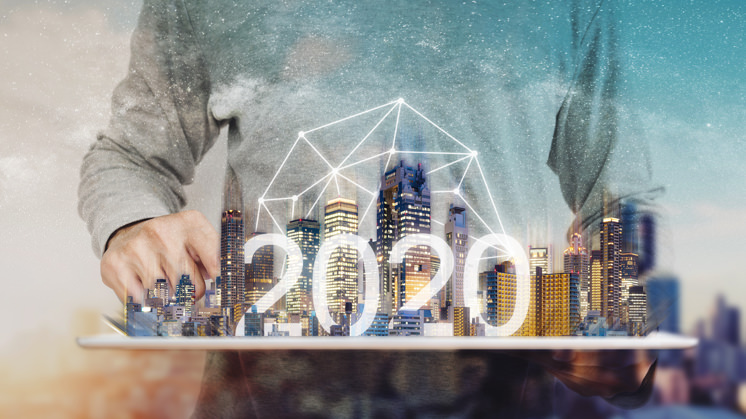Advances in technology are happening at breakneck speed and 2020 is expected to be the year of the so-called great technological leap. Industries are quickly preparing to enter a new era where robots, the Internet of Things (IoT) and other trends in innovation will be at the forefront of our days.
Just five years ago, the multinational Cisco, one of the large North American telecommunications companies, predicted that in 2020 there would be more people in the world with a mobile phone than with access to electricity and drinking water. Today 67% of the world’s population uses these devices, according to data from GSMA Intelligence, the organizer of the Mobile World Congress (MWC), and the technology of the future, hand in hand with these objects, awaits us just around the corner.
THE MAIN TECHNOLOGICAL TRENDS (ICT)
The technological calendar of the 21st century will have a key year: 2020. The consulting firm Gartner, specialized in information and communication technologies (ICT), has foreseen for the coming months the arrival of some of the most anticipated advances in innovation of the last decade, which is included in its Top 10 Strategic Technology Trends for 2020 report.
Below, we present the ten most noteworthy technology trends at a strategic level in 2020:
This part of robotics tries to fully automate business processes to make them more precise, efficient and up to ten times faster by combining emerging technologies such as RPA (Robotic Process Automation) , Artificial Intelligence ( AI) and machine learning . ) , among others.
Virtual reality (VR) , augmented reality (AR) and mixed reality (MR) are transforming the way we perceive and interact with the digital world . This change brings us closer to a future with applications that will offer the user multiple experiences.
People’s access to technical and business experience will be done without costly requirements and around four main areas: data and analysis, development, design and knowledge.
Technology trends also see the use of innovation to enhance our physical and cognitive abilities, from subcutaneous implants to greater access to information.
Consumers are demanding greater control of their personal data. Transparency and traceability are essential in this regard by addressing regulatory requirements, preserving ethics in the use of technology and stopping the growth of mistrust in companies.
Just five years ago, the multinational Cisco, one of the large North American telecommunications companies, predicted that in 2020 there would be more people in the world with a mobile phone than with access to electricity and drinking water. Today 67% of the world’s population uses these devices, according to data from GSMA Intelligence, the organizer of the Mobile World Congress (MWC), and the technology of the future, hand in hand with these objects, awaits us just around the corner.
THE MAIN TECHNOLOGICAL TRENDS (ICT)
The technological calendar of the 21st century will have a key year: 2020. The consulting firm Gartner, specialized in information and communication technologies (ICT), has foreseen for the coming months the arrival of some of the most anticipated advances in innovation of the last decade, which is included in its Top 10 Strategic Technology Trends for 2020 report.
Below, we present the ten most noteworthy technology trends at a strategic level in 2020:
This part of robotics tries to fully automate business processes to make them more precise, efficient and up to ten times faster by combining emerging technologies such as RPA (Robotic Process Automation) , Artificial Intelligence ( AI) and machine learning . ) , among others.
Virtual reality (VR) , augmented reality (AR) and mixed reality (MR) are transforming the way we perceive and interact with the digital world . This change brings us closer to a future with applications that will offer the user multiple experiences.
People’s access to technical and business experience will be done without costly requirements and around four main areas: data and analysis, development, design and knowledge.
Technology trends also see the use of innovation to enhance our physical and cognitive abilities, from subcutaneous implants to greater access to information.
Consumers are demanding greater control of their personal data. Transparency and traceability are essential in this regard by addressing regulatory requirements, preserving ethics in the use of technology and stopping the growth of mistrust in companies.
